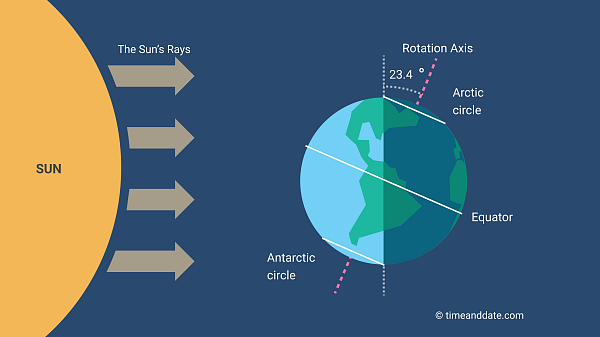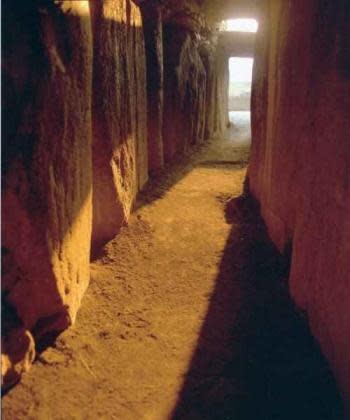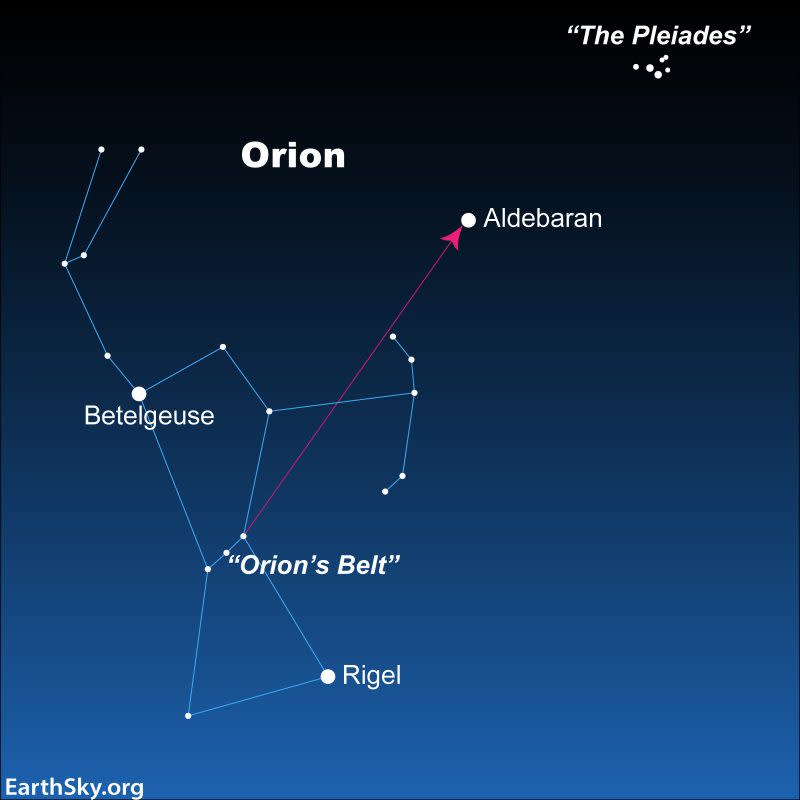Sky Shorts: A celebration of light on the winter solstice

At 10:27 p.m. Dec. 21, the Northern Hemisphere of planet Earth reaches its maximum tilt away from the sun.
That is when we will celebrate the winter solstice, or the longest night of the year. The winter solstice also marks the first day of astronomical winter. It’s also the shortest day, with the Sun traveling on its shortest, southernmost path through the sky, providing only 7 hours, 14 minutes of daylight.
Long ago, the winter solstice was celebrated as a day of rebirth or a celebration of light. From the winter solstice until the summer solstice, we gain extra daylight each day.
Our ancestors used the Sun and Moon as sort of a calendar. They created dramatic structures to capture the Sun’s path through the sky. Around 3200 BC, ancient people in Ireland built Newgrange, a huge mound of dirt surrounded by stones. For five days around the winter solstice, sunlight illuminates a small room inside the mound for 17 minutes at dawn.

Since ancient times, people have celebrated the winter solstice in a variety of different cultural and religious traditions. These are just a few of those celebrations.
Saturnalia, which honored the agricultural god Saturn, was a weeklong Roman feast, which included giving gifts, games and merrymaking. Many aspects of the Saturnalia festival, such as gift-giving and decorating homes with greenery and lights, were a direct influence on our modern Christmas celebration.
A Scandinavian festival called Juul included feasting and caroling as well as burning logs to welcome the Sun back.
Dongzhi was an important festival in China. It started as an end of harvest festival and families enjoyed special foods such as tang yuan or rice balls.
The Hopi Native Americans of northern Arizona celebrated Soyal which included dancing and occasional gift giving. The Hopi welcomed kachinas or protective spirits from the mountains and crafted prayer sticks.
For this year’s winter solstice, celebrate the return of the light with your family and friends. Burn a yule log, make a wreath, prepare a feast, celebrate the lights, decorate with greenery, or dine by candlelight!

Night sky for December
Four months until the total solar eclipse!
Planets and the moon
With the long nights of December, there will be plenty of time to enjoy the fantastic planet show. Our two gas giants, Jupiter and Saturn continue to rule the night. After watching a beautiful sunset in the west, turn to the opposite part of the sky and you will see brilliant Jupiter, glowing at magnitude -2.8, all night. It fades slightly by month’s end to -2.6. Jupiter is quite a sight through a telescope. Every night, the four largest Galilean moons will be in a different position in relation to this giant. Binoculars also work great. If you focus on Jupiter, you will notice a few pinpoints of light, which are the Galilean moons. Jupiter will pair with the gibbous Moon on Dec. 21-22.
Saturn can be found high in the southern sky at magnitude 0.9, dimmer than Jupiter. It is up and to the right of the bright star Fomalhaut. Be sure to get out early in the evening as we head towards the end of the month when Saturn sets by 9 p.m. Saturn is a lovely telescopic view and will pair with the crescent Moon on Dec. 17.
Mercury will be more of a challenge to find after sunset. It will be six degrees high on Dec. 1, shining at magnitude -0.4. There will be a slight improvement in viewing on Dec. 4 when Mercury reaches greatest eastern elongation from the Sun at 21 degrees. After Dec. 15, Mercury fades from view. But it will return to the morning sky by months end. On Dec. 30, it brightens to magnitude 1.0 and can be found 22 degrees lower left of Venus.
Neptune is visible all evening at magnitude 7.7 and can be found on the border of northeast Aquarius and southwest Pisces. Binoculars will be needed. It is just south of the Circlet asterism of Pisces. The First Quarter Moon will be nearby on Dec. 18-19.
Uranus is visible late into the night at magnitude 5.7. It lies roughly between Jupiter and the Pleiades star cluster. The gibbous Moon will be just to the left of Uranus on Dec. 23. Binoculars will be needed for viewing.
Venus rules the predawn sky, dazzling at magnitude -4.1. It rises shortly before 4 a.m. It will make a lovely pairing with the crescent Moon on Dec. 9. As Venus journeys through the sky, it pairs with several bright stars. Spica on Dec. 1, Arcturus on Dec. 17 and Antares on Dec. 31.
Mars is not viewable this month.
The peak of the Geminid Meteor Shower is Dec. 13-14, under dark skies all night. Get out during the evening hours and you might catch some of the bright meteors.
Night sky spotlight
This is the time of year to enjoy one of the most beautiful open star clusters, the Pleiades or the Seven Sisters, Electra, Taygete, Maia, Celaeno, Alcyone, Sterope, and Merope. In Greek lore, these seven sisters were the daughters of Atlas and Pleione. Head out on the next clear evening and look toward the east, southeast for brilliant Jupiter. Down and to the left you will spot a small cluster of stars that resemble a mini dipper or maybe you can imagine a small shopping cart. This is the Pleiades! The Pleiades or Messier 45 (M45) is one of the nearest star clusters to Earth at a distance of 444 light years away. This cluster is made up of 1000 or more stars, located in the constellation Taurus. These middle-aged hot B-type stars were born 100 million years ago and have a life span of only a few hundred million years.
The Pleiades are such a celestial treasure in the night sky. This star cluster can be seen throughout most of the world, from the north pole to the southernmost tip of South America. As you can imagine, the Pleiades was used as a calendar for many civilizations. It was often associated with the coming winter. Pleiades is the Greek word for sailing. In ancient Greece, when the Pleiades appeared in the morning sky before sunrise it announced the opening of navigation season. Halloween originated from the Druid belief that when the Pleiades reached its highest point at midnight, the veil dividing the living from the dead was at its thinnest. The Zuni of New Mexico called the Pleiades, Seed Stars. Every year the Pleiades depart from the evening sky signaling the planting season.
For times when Jupiter can not be used as a guide, find mighty Orion, the Hunter. Look above Orion to a V-shape in the stars this is the face of Taurus, the Bull. Above Taurus you will see this celestial delight! The best way to enjoy the Pleiades is through a pair of binoculars. Give it a try!
For further night sky details, maps, and audio, visit my website www.starrytrails.com.
Visit the Hoover Price Planetarium
Visit www.mckinleymuseum.org, for holiday show dates and times! Planetarium shows are free with museum admission. The planetarium is located inside the McKinley Presidential Library & Museum, 800 McKinley Monument Drive NW in Canton. For more information, please call the Museum at 330-455-7043.
This article originally appeared on The Alliance Review: Sky Shorts: A celebration of light on the winter solstice

